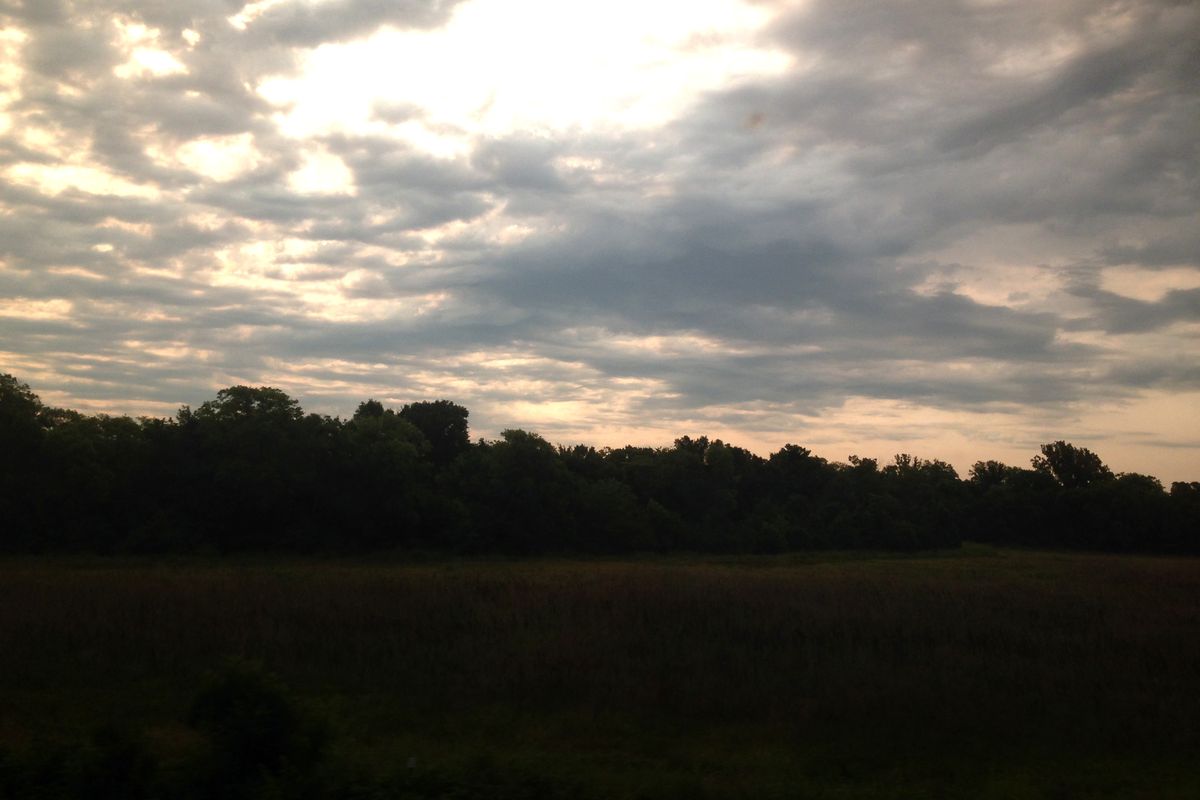Audrey’s Adventure: Cue The Banjo

The 59 City of New Orleans train is an identical vessel to the Empire line---two levels, reclinable seats, outlets on the window side of each cabin, and a sightseeing/snack car. It leaves Chicago after an hour’s delay. If you are unfamiliar with the Amtrak system, I will explain that, first, the trains are not all identical to one another. For example, the trains I have taken up and down between Oregon and Bellingham are often only one level, with seats that are not nearly as comfy as the ones described in the first sentence. Second, one does not always get to choose their seat; occasionally, I have come across assigned-seating situations. Lastly, the ending location on your ticket is abbreviated on tiny, colorful scraps of paper, and placed above your respective cabin, in case you fall asleep before your stop and the conductor needs to wake you.
I seat myself next to a woman destined for Yazoo City, Miss., while eyeing the tags in my car---studying my train route map to match abbreviations with physical locations, and identify whose window seat I’m going to take when they exit. While the practice does hold an element of immaturity to it, it is also so that I don’t have worry about intruding my neighbor’s space with my phone cord when I need to charge it, or giving her the creeps when I want to stare out the window at the new territory I’m passing through. The conductor tells me I have a few hours until the car starts emptying out. I kill this time in the sightseeing lounge, nursing a cup of coffee and watching lightning split the sky over Illinois, thinking about the nature of power and its relationship to love and beauty.
In Centralia I take my seat, and fall asleep around one in the morning. When I finally wake up, I’m somewhere in Tennessee. The landscape becomes distinctively more southern, as we swoosh through miles of meadows and descend through swamps over the course of hours. I listen to Sylvan Esso’s self-titled debut record and wonder how my neighbor labeled it as “math rock” in a recent conversation, while the track “Uncatena” seems to perfectly match the speed of what I feel as a greater distance grows between myself and my home state.
As the train moves deeper into Mississippi, the sight of brown-watered rivers and white egrets complement abandoned structures and dusty townships. When I get off the train for a five-minute stop in a small town, the humidity is stifling---like being wrapped in a warm, wet, invisible blanket.
Eventually, Lake Ponchartrain comes into view, as does the interstate along its shores. As the train nears New Orleans, I catch a glimpse of the Superdome, and remember that I’m about to visit a city that only 10 years prior was devastated by one of the deadliest natural disasters in our country’s history. There are still parts of New Orleans, I’m told when I get here, that still haven’t entirely recovered from Hurricane Katrina.
The city center is a jumble of the eclectic, ugly, wild, and stunning---tall, bleak hotel buildings juxtaposing a variety of garish-seeming businesses, sandwiched by stately historic blocks and palm trees. It’s a place that seems to make room for all that encompasses its identity, owning the weird that such a composition is. Classic-looking streetcars run straight through downtown, with names like “City Park” and “Cemeteries.” I spend a lot of time during my trip trying to imagine the conversation that occurred between the powers that be in the world of local transportation here, overthinking why it seems like a grand idea to identify a street car with the world of death. But then, New Orleans itself seems inherently comfortable with the idea of death and shadows, as much as it is celebrated for its liveliness and resilience. For someone who has the number thirteen tattooed on her arm (in Roman numerals, so it is occasionally mistaken for “kill” by strangers), this is a relationship I can appreciate.
I check into India House Hostel, which sits on the edge of Mid-City. The inside is colorful and covered in art applied directly to the walls, amidst several Sharpie scribbles professing life wisdom of all varieties left behind by young travelers. I want to use the word “Bohemian,” in a non-ironic way, to describe the atmosphere, but here I will also note that the hostel is incredibly clean and well-organized. Out back, a 4-foot deep pool spans the radius of a raised deck. I am given a top-bunk bed in an all-female dorm right next to the air conditioning unit. This is a godsend like no other.
At twilight, I stand waiting for the streetcar on Canal Street. It occurs to me at this stage of my journey that at no point have I ever felt afraid of any aspect of my travels that, before the metldown I had last year, would have nagged at me. Things like being thousands of miles from home. Being completely and utterly alone. Being unsure about money matters, or if I would have a place to stay at night.
Instead, I only have this feeling, and the more I travel like I have been the past six months, the stronger it gets. It’s this sensation that I belong exactly where I am, as I am. I belong to the moment, seeing the things I see that are new, without trying to make anything else of it other than what it is.
I take a deep breath of New Orleans through my nose. I’ve dreamt about this place for years. Wondered endlessly about the magic so powerful here that the realities of its poverty, danger, and tragedy do not swallow it in any single way. And now I am here, baring my teeth and some hurt and a big heart, ready to fall in love for a few days.
The streetcar arrives, and I step aboard.